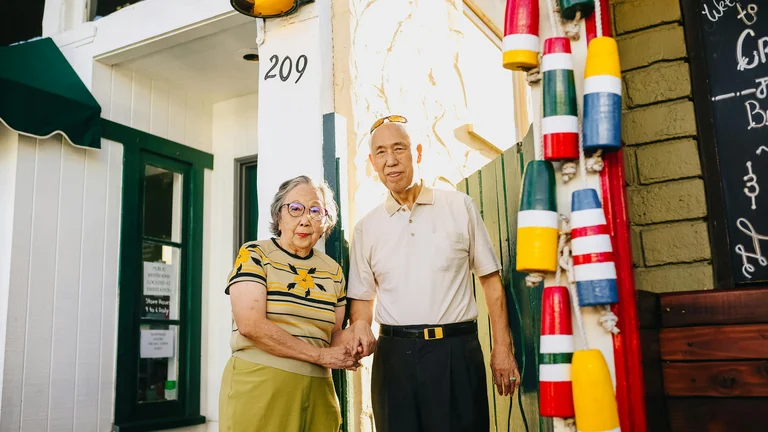Defining the Enigmatic Appeal of Charming Second Leads

In contemporary storytelling, especially within television dramas and romantic narratives, the role of the second lead transcends mere secondary importance to become a pivotal driving force in audience engagement. Charming second leads are characterized by a complex blend of charisma, emotional depth, and relatability, which often eclipse traditional protagonist qualities and cause viewers’ sympathies to shift dynamically. These characters usually dwell in the narrative shadows of the main leads but command a rare magnetism that can turn a supporting role into a cultural phenomenon.
Unlike primary protagonists who are often polished and idealized, second leads excel through nuanced characterization, embodying flaws, vulnerabilities, and relatable struggles. This multidimensionality fuels their charm and injects realism into the story, making their emotional journeys compelling. They frequently embody the tension between desire and restraint, ambition and morality, or vulnerability and strength, creating an arresting paradox that invites audience investment in ways protagonists sometimes cannot achieve.
Moreover, second leads often provide essential contrast and commentary on the main characters or the broader themes within a narrative. Their charm stems not solely from individual traits but also from the friction they introduce, which facilitates narrative complexity and thematic richness. This complexity enables second leads to carve their unique niche, making them indispensable elements in storytelling.
Historical Evolution and Cultural Adoption of Second Lead Characters
The narrative archetype of the second lead has roots that extend deeply into classical literature and theater traditions wherein secondary characters were crafted to elevate the main plot or highlight the protagonist’s qualities through contrast. However, modern media, particularly East Asian dramas and romantic comedies, have transformed second leads into fully fleshed-out, beloved entities.
In global pop culture's modern visual storytelling, the rise of second leads emerged alongside evolving audience preferences. Viewers increasingly crave complexity and moral ambiguity, finding the predictability of primary leads occasionally uninspiring. Production houses have astutely responded by expanding second lead roles, enriching their backstories and investing in the actor's portrayal to enhance appeal. This transformation reflects a shift from traditional linear hero narratives to ensemble pieces where every role offers significant emotional and plot contributions.
In Korean dramas (K-dramas), for example, second leads have achieved cult status, with fanbases dedicated exclusively to these characters, prompting spin-offs, special episodes, or merchandise. These cultural dynamics underline the adaptive nature of second lead roles as they respond fluidly to audience psychology and cultural contexts.
Key Traits and Psychological Drivers Behind Audience Attachment
The charm of second leads is not incidental but anchored in identifiable traits that resonate deeply with viewers. These include emotional accessibility, self-sacrifice, understated confidence, and often, a tragic or complex backstory that invites empathy and emotional investment. Unlike protagonists who tend toward plot-centric heroism, second leads typically display internal struggles that render them more human and approachable.
Another psychological factor fueling their appeal is the element of unpredictability. While main leads often follow story arcs aligned with audience expectations of victory or romance, second leads evoke curiosity due to their ambiguous motives or potential for meaningful change. This tension creates a captivating dynamic where viewers emotionally oscillate between rooting for them and anticipating narrative setbacks.
The concept of ‘forbidden love’ or ‘unrequited affection’ frequently surrounds charming second leads, amplifying audience attachment through a shared sense of hopeful longing and emotional complexity. Psychologically, viewers identify with the underdog or the overlooked, projecting their empathy on these characters and thereby intensifying the viewing experience.
Case Studies: Iconic Second Leads Who Stole the Spotlight
Analyzing specific characters reveals patterns and provides a framework for understanding the phenomenon of second leads overshadowing main leads. One landmark example is Seo In-guk’s portrayal of Han Tae-sang in the drama The Master's Sun, whose melancholic charm and layered personality captivated audiences despite limited screen time compared to the main hero. Tae-sang’s loyalty, vulnerability, and quiet strength created a compelling counterpoint that deeply resonated.
Similarly, in the drama Descendants of the Sun, the character Seo Dae-young, although technically a secondary protagonist, gained enormous fan adoration due to his grounded realism, relatable motivations, and subtle humor, effectively challenging traditional hierarchies of lead importance.
Western television also illustrates this trend. Take the character Draco Malfoy from the Harry Potter series, who, while not a protagonist, garnered intrigue and a significant fanbase through complex motivations, moral ambiguity, and undeniable charisma. The role grew beyond the typical antagonist function, showcasing how second leads can evolve to capture the audience's imagination.
Factors Contributing to Second Leads Overshadowing Main Leads
Several narrative and production factors may foster a second lead’s ability to eclipse main leads. First, well-crafted character development that avoids clichés or one-dimensional traits allows second leads to feel authentic and multidimensional, increasing their appeal. Writers who invest in backstory, conflicts, and growth paths fuel greater viewer connection.
Second, casting decisions significantly influence reception. Talented actors capable of nuanced performances can imbue second leads with charisma that dominates scenes, often stealing focus in pivotal moments. Chemistry with other characters also matters; romantic tensions involving second leads can produce memorable moments that outshine primary pairings.
Third, narrative structure sometimes inadvertently promotes second leads. When plot pacing or main lead arcs feel slower or less engaging, second leads with striking personalities or subplots can inject momentum and excitement, attracting audience attention and loyalty.
Table: Comparative Overview of Popular Charming Second Leads and Their Defining Features
| Character | Drama/Show | Core Traits | Reason for Appeal | Impact on Story |
|---|---|---|---|---|
| Han Tae-sang | The Master's Sun | Loyal, Vulnerable, Reserved | Emotional depth and subtle strength | Provided emotional contrast and tension |
| Seo Dae-young | Descendants of the Sun | Grounded, Relatable, Humorous | Realism and charm balanced tone | Enhanced romantic dynamics |
| Draco Malfoy | Harry Potter Series | Complex, Ambiguous, Charismatic | Moral complexity and intrigue | Added tension and depth to antagonist role |
| Kang Hwi-roo | The Heirs | Protective, Responsible, Sincere | Emotional sincerity and ethics | Offered heartfelt alternative to main love interest |
| Captain Hook | Once Upon a Time | Charismatic, Witty, Daunting | Unpredictable and charming anti-hero | Introduced moral complexity and romantic tension |
Strategies Writers Employ to Create Memorable Second Leads
Successful second leads emerge from deliberate writing strategies designed to enrich their roles without undermining the protagonists. This balance requires crafting characters who can stand independently while complementing the main storyline. Writers often employ layered personality traits, ensuring second leads have recognizable flaws and virtues that make them relatable.
Developing personal stakes distinct from the protagonist's mission allows second leads to assert narrative relevance. For example, intertwining intimate backstories or secret motivations creates tension and drives subplots that parallel or intersect the primary narrative thread.
Another technique involves pacing revelations about the second lead, gradually deepening the audience’s understanding and investment. Mystery around motivations or past trauma, slowly peeled back, sustains intrigue and emotional engagement throughout the series.
Emphasizing emotional honesty and moments of vulnerability helps build a genuine connection between second leads and viewers. When these characters confront challenges authentically, they transcend archetypal boundaries and become more nuanced.
List: Essential Elements to Bring Out the Charm in Second Leads
- Relatable Vulnerability: Showcasing internal struggles that mirror universal human experiences.
- Consistent Growth: Allowing the character to evolve logically and believably through the plot.
- Distinct Identity: Giving them unique traits that differentiate from the main lead.
- Emotional Complexity: Layering feelings such as hope, jealousy, and regret in ways audiences can empathize with.
- Meaningful Relationships: Creating bonds that reveal different dimensions of their personality.
- Subtle Charisma: Allowing charm to manifest through gestures, dialogues, or quiet confidence rather than overt bravado.
Audience Interaction and Cultural Impact of Charming Second Leads
Second leads who steal the show often inspire intense fan engagement manifested through fan clubs, fanfiction, social media discussions, and dedicated merchandise. This phenomenon reveals not only the character’s strong impression but also the modern audience’s desire for narrative diversity. Through such engagement, second leads influence cultural expressions and sometimes even impact storyline direction when producers respond to fan enthusiasm.
Moreover, these characters serve as vehicles for discussing broader societal themes such as unrequited love, loyalty, societal expectations, and redemption. Fans project personal experiences or aspirations onto second leads, creating intimate emotional connections that studios seldom predict.
Internationally, charming second leads have contributed to the global rise of niche fandoms. For instance, the transnational exchange of K-drama content has propelled second lead popularity beyond South Korea, with global viewers embracing alternative romantic heroes and complex supporting characters, enriching transmedia storytelling cultures.
Challenges and Risks in Developing Second Leads
Although elaborate character arcs contribute to the success of second leads, they also present challenges. Writers must avoid overshadowing protagonists to maintain narrative balance. Excessive focus on second leads can fragment the storyline or confuse audience allegiance, weakening overall cohesion.
Another risk lies in character consistency. To maintain charm, second leads must act within believable parameters. Overuse of melodrama or inconsistent behavior risks alienating viewers or reducing authenticity.
There is also a structural risk related to story resolution. Providing satisfactory arcs for beloved second leads without derailing the main plot requires careful plotting. Unresolved subplots or unsatisfactory endings often generate fan frustration and diminish the character’s legacy.
Table: Common Pitfalls vs. Best Practices in Writing Second Leads
| Aspect | Common Pitfalls | Best Practices |
|---|---|---|
| Character Focus | Overemphasis leading to story fragmentation | Balanced screen time that supports main arcs |
| Personality | One-dimensional stereotypes or clichés | Layered traits with flaws and growth |
| Audience Expectations | Ignoring fan engagement or feedback | Adapting character development based on dynamics |
| Resolution | Leaving arcs incomplete or forced endings | Thoughtful closure that respects character complexity |
Production and Marketing Influences Elevating Second Leads
Beyond narrative design, production elements such as direction, cinematography, and editing shape how second leads are perceived. Strategic framing, memorable lines, and spotlight scenes amplify their presence. Costume design and visual cues reinforce their personality traits and charm without overwhelming subtlety.
Marketing efforts also spotlight second leads through targeted social media campaigns, behind-the-scenes content, and interactive fan events. This fosters a sense of intimacy and loyalty between viewers and the character, enriching their status as beloved figures.
Moreover, merchandising strategies, including posters, apparel, and collectibles centered on second leads, reflect and perpetuate their popularity, generating additional revenue streams and prolonging audience engagement beyond the original series run.
Guidelines for Actors Portraying Charming Second Leads
Actors undertaking second lead roles face unique challenges and opportunities. The role demands subtlety and emotional range to evoke multi-layered portrayals without overwhelming the storyline. Successful actors master expressive restraint, conveying depth through micro-expressions and nuanced body language.
Building chemistry with main leads is paramount, as romantic and interpersonal dynamics often define audience investment. Actors must navigate complex relational scenes fluidly, balancing tension and warmth authentically.
Understanding the character's psychological profile and backstory enables actors to inhabit roles realistically. This approach fosters sustained viewer empathy, ensuring the second lead remains memorable and relatable.
Step-by-Step Guide to Crafting a Charming Second Lead Character
Creating a second lead with the potential to steal the show involves a systematic process blending creativity and analysis. Below is a practical guide for writers and creators:
- Establish a Clear Role: Define how the second lead complements and contrasts the protagonist in thematic and narrative terms.
- Develop a Detailed Backstory: Craft a history rich with conflict, desires, and motivations to instill depth.
- Identify Core Traits: Choose defining personality attributes that offer complexity and charm.
- Design Flaws and Vulnerabilities: Embed human imperfections to foster relatability.
- Plan Growth Arc: Map realistic personal development with triggers and resolutions.
- Intertwine Relationships: Create meaningful interpersonal connections that reveal diverse facets.
- Balance Screen Time: Allocate moments that highlight without overshadowing the protagonist.
- Incorporate Unpredictability: Add traits or decisions that maintain suspense and audience interest.
- Write Memorable Dialogue: Utilize language that reflects personality and resonates emotionally.
- Iterate with Feedback: Revise based on audience and production insights for continuous refinement.
This approach, paired with collaborative input from actors and directors, yields second leads finely attuned to story and audience psyche.
The Future of Second Leads in Emerging Media and Genres
Looking ahead, the role of charming second leads will continue evolving amid changes in media consumption and genre conventions. Interactive storytelling platforms, virtual reality narratives, and serialized digital content offer new modes for second leads to emerge as pivotal characters influencing multiple plot pathways.
Additionally, expanding cultural exchange and genre hybrids across global entertainment widen opportunities for second leads with diverse backgrounds and narratives. Inclusivity and representation trends further enrich character complexity, opening doors for second leads who embody broader societal experiences.
The marketing power of second leads is expected to grow as transmedia storytelling integrates character-driven engagement across games, merchandise, and social networks, making them central not just to plotlines but to entire fan ecosystems.
FAQ - Charming Second Leads Who Stole the Show
What makes a second lead character charming compared to the protagonist?
Charming second leads often have layered personalities showcasing vulnerability, complexity, and relatability that differ from the more straightforward or idealized traits of protagonists. Their emotional depth and subtle struggles create a strong connection with audiences.
How do second leads steal the spotlight from main characters?
They steal the spotlight by possessing nuanced characterization, memorable performances, and compelling story arcs that resonate deeply, sometimes offering refreshing contrasts or intense emotional presence that captivates viewers more than the main leads.
Can second leads have their own storylines separate from the protagonist?
Yes, well-developed second leads often have distinct, meaningful subplots or backstories that add richness to the overall narrative and keep audiences engaged with their personal journeys.
Why do audiences often empathize with second leads experiencing unrequited love?
Unrequited love evokes universal emotions like longing and hope, drawing viewers to relate emotionally to second leads who embody these feelings, amplifying attachment through shared vulnerability.
Do production choices affect the popularity of second leads?
Absolutely. Casting, directing, screen time allocation, and marketing strategies directly impact how engaging and memorable a second lead appears, influencing audience perception and affinity.
Are charming second leads a global phenomenon or specific to certain cultures?
While prominent in Asian dramas, especially Korean and Chinese, charming second leads are increasingly recognized globally across various cultures and media formats due to shifting audience tastes and storytelling trends.
What challenges arise in writing second lead characters?
Challenges include balancing their development without overshadowing protagonists, maintaining character consistency, and providing satisfying resolutions to their storylines without diluting the central plot.
Charming second leads captivate audiences through relatable complexity and emotional depth, often outperforming main characters. Their nuanced personalities and compelling subplots bring richness to narratives, making them essential figures who greatly enhance storytelling across global media.
Charming second leads have reshaped narrative dynamics by introducing richly textured, emotionally compelling characters who transcend traditional supporting roles. Their ability to captivate audiences through complexity, relatability, and nuanced portrayals challenges conventional storytelling hierarchies. As media continues to evolve, second leads will persist as influential narrative players whose appeal enriches story worlds and deepens audience engagement.






